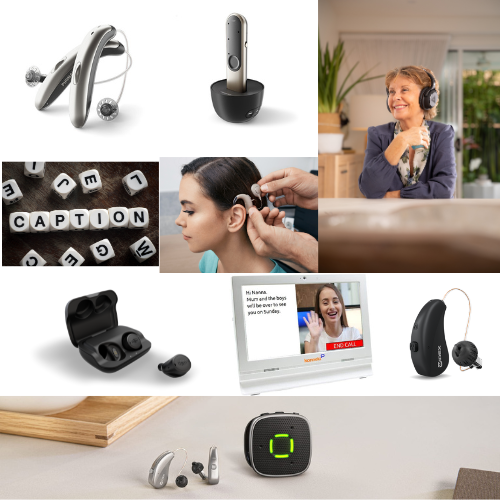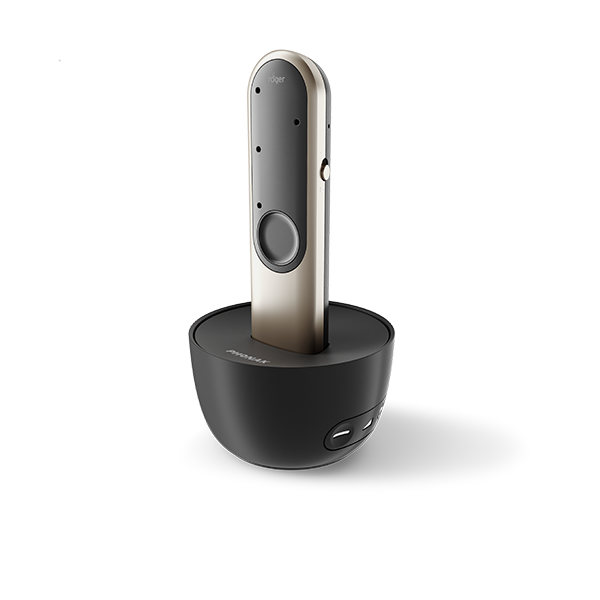10 Must-Have Assistive Devices for Individuals with Hearing Loss
Living with hearing loss can present unique challenges in various aspects of life, from communication to everyday activities. However, thanks to advancements in technology, a wide range of assistive devices is now available to help individuals with hearing loss manage these challenges and enhance their quality of life.
Hearing loss stands as the third most common chronic physical condition in the United States, affecting an estimated 13% of adults who report some degree of hearing difficulty [1]. This prevalence escalates with age, particularly after 65, affecting more than double this demographic. Significantly, hearing loss is more prevalent in men than women and is often linked to cognitive and functional decline in older adults. Despite advancements in hearing technology and preventive care, the challenge of mitigating hearing loss remains. Factors such as age, exposure to loud noises, genetics, certain medications, and other illnesses contribute to the complexity of this condition. All this underscores the importance of innovative solutions and interventions aimed at preserving hearing health and enhancing the quality of life for those affected.
Currently, there are several devices available in the market that can help and improve the life of people with hearing impairment. There is a wide range of solutions, such as cochlear implants that can improve hearing for people with severe hearing loss or simpler devices like personal sound amplifiers or smartphone apps that offer cost-effective solutions to improve daily auditory interactions.
In this article, we will explore fourteen must-have assistive devices that can significantly improve the daily experiences of individuals with hearing loss and have the potential to enrich the lives of people with hearing impairments.
- Hearing Aids:
Hearing aids are perhaps the most common and essential assistive devices for individuals with hearing loss. These devices are worn in or behind the ear and amplify sound, enhancing the wearer's ability to hear and understand speech and other sounds in their environment.
Beyond their primary function of sound amplification, modern hearing aids have evolved to incorporate advanced technologies that offer a range of features tailored to the user's specific hearing loss profile and lifestyle. Digital processing allows for clearer sound quality, reduced background noise, and the ability to customize settings for different environments, from quiet conversations to noisy public spaces. Many hearing aid models now include wireless connectivity, enabling direct streaming of phone calls, music, and TV audio. This seamless integration with personal electronic devices not only enhances the user experience but also empowers individuals with hearing loss to engage more fully in their social and digital worlds. - Cochlear Implants:
For individuals with severe to profound hearing loss, cochlear implants are a revolutionary solution.
Cochlear implants have dramatically altered the landscape of auditory rehabilitation, offering hope where traditional hearing aids cannot help. Surgically implanted, these electronic devices bypass damaged parts of the inner ear and directly stimulate the auditory nerve with electric signals, allowing individuals to perceive sound. The outcome is a new form of hearing that, with proper training and rehabilitation, can significantly enhance speech understanding and the overall quality of life. Importantly, children and adults alike can benefit from cochlear implants, with early implantation in children leading to more natural speech development and easier integration into hearing communities. - Assistive Listening Devices:
Assistive listening devices (ALDs) are portable systems that help individuals with hearing loss hear better in specific listening situations. They can be used alongside or integrated into hearing aids and assist in scenarios such as watching TV, participating in conversations, or attending events in large venues.
Assistive Listening Devices (ALDs) extend beyond simple sound amplification to enhance auditory access in environments where background noise, distance, and reverberation might otherwise pose challenges. These devices often employ technology such as FM, infrared, and induction loop systems to deliver sound directly to the user, minimizing extraneous noise and improving clarity. Particularly useful in educational settings, theaters, places of worship, and conference centers, ALDs ensure that individuals with hearing loss can fully participate in and benefit from various social and professional gatherings. With the advent of digital and Bluetooth technology, many ALDs now offer seamless connectivity to smartphones and other digital devices, further enriching the listening experience and providing users with greater control over their auditory environment. - Captioned Telephones:
Captioned telephones display real-time captions of the phone conversation, enabling individuals with hearing loss to read what the other person is saying while they speak.
Captioned telephones have revolutionized telephone communication for the hearing impaired by combining the convenience of a traditional phone call with the accessibility of real-time text. These innovative devices use voice recognition technology to transcribe spoken words into captions almost instantaneously, allowing users to read along as they listen. This dual input of auditory and visual information ensures that nothing is missed, even in complex conversations or situations with poor audio quality. Available in both landline and mobile formats, captioned telephones can accommodate the diverse needs and lifestyles of individuals with hearing loss, ensuring they remain connected with friends, family, and colleagues.. - Tinnitus Maskers:
Tinnitus, often associated with hearing loss, is characterized by the perception of ringing or buzzing sounds in the ears. Tinnitus maskers are devices that produce soothing sounds to mask or distract from the tinnitus noises, providing relief and improving concentration
Tinnitus maskers have emerged as a crucial tool in managing the intrusive symptoms of tinnitus, offering users a reprieve from the constant and often distressing noise. As already mentioned, by generating ambient or nature-inspired sounds, these devices create a therapeutic auditory backdrop that helps to diminish the focus on tinnitus. The technology behind tinnitus maskers is designed to be flexible and personalized, allowing users to select sounds that best aid their relaxation and distraction needs. Some advanced models are integrated into hearing aids, providing a two-fold benefit of amplifying external sound while simultaneously masking tinnitus. This integration facilitates a more natural listening experience, helping individuals to engage more fully in daily activities and achieve a better quality of life despite the challenges of tinnitus. - Vibrating Alarm Clocks:
Traditional alarm clocks may not be effective for individuals with hearing loss. Vibrating alarm clocks work by using strong vibrations or flashing lights to wake up individuals who cannot rely on auditory cues alone, ensuring they start their day promptly.Vibrating alarm clocks are tailored to the unique needs of the deaf and hard of hearing community, as well as heavy sleepers who might not respond to traditional audio alarms. These devices can be placed under a pillow or mattress, where the vibrations are strong enough to awaken even the deepest sleeper without disturbing others in the household. Many models also incorporate visual alarms, such as flashing lights or a display that illuminates brightly at the set alarm time, providing an additional layer of alert. The versatility and effectiveness of vibrating alarm clocks enhance independence and confidence in managing daily routines, ensuring that users can start their day on time, every time. - Loop Systems:
Loop systems use electromagnetic fields to transmit sound wirelessly to hearing aids or cochlear implants equipped with a telecoil (T-coil). They are commonly installed in public spaces, meeting rooms, and theaters, providing improved accessibility for individuals with hearing loss.
Loop systems directly link the audio source to the user's hearing device and ensure clear and direct sound transmission, effectively eliminating background noise and reverberation that can obscure speech clarity. This technology enhances the experience of attending performances, meetings, and religious services. The last years, there has been a widespread adoption of loop systems in various venues and this indicates a growing recognition of the importance of accessibility for people with hearing impairments. - TV Listening Systems:
TV listening systems utilize wireless technology to stream audio from televisions directly to a set of headphones or personal listening devices. This allows individuals with hearing loss to enjoy their favorite shows without disturbing others while optimizing sound clarity.
TV listening systems can create a personalized viewing experience, allowing users to control the volume of their entertainment without affecting the audio levels for others in the room. These systems are particularly beneficial in multi-user households, where one member's hearing loss might otherwise necessitate uncomfortably high volumes for everyone else. With the advent of advanced connectivity options, such as Bluetooth and Wi-Fi, TV listening devices now offer compatibility with a wide range of audio sources beyond just televisions, including smartphones, tablets, and home theater systems. This versatility ensures that users can enjoy their favorite TV programs but also music and movies with unparalleled audio clarity, making these systems a comprehensive solution for enhanced auditory access in the home entertainment environment. - Personal Sound Amplifiers:
Personal sound amplifiers (PSAPs) are designed to amplify sound for individuals with mild to moderate hearing loss. PSAPs provide an affordable alternative to hearing aids, effectively amplifying environmental sounds and making conversations more accessible.
PSAPs have gained popularity for their ease of use and accessibility and can be a great solution for those who might not be ready to invest in traditional hearing aids or who seek a simple solution for specific situations like bird watching, lectures, or distant conversations. Unlike hearing aids, which are programmed by audiologists to match a user's specific hearing loss profile, PSAPs can be purchased over the counter and offer a general amplification of sound. This makes them particularly valuable for users looking for immediate enhancement in hearing without going through the comprehensive testing and fitting process associated with hearing aids. Their portability and discreet designs further contribute to their appeal, allowing users to enhance their hearing experience in a variety of settings with minimal effort. - Smartphone Apps:
Smartphone apps are increasingly becoming powerful assistive tools for individuals with hearing loss. They can serve various purposes, such as providing captioning services, acting as sound amplifiers, or offering sound recognition features to help identify important sounds in the environment.
The versatility and innovation of smartphone apps for hearing loss extend to real-time communication facilitation, such as live speech-to-text transcription, which can be particularly beneficial in meetings, lectures, or social gatherings. Additionally, some apps integrate with hearing aids and cochlear implants to allow users to fine-tune settings, adjust volume, and select programs directly from their smartphones, offering an unprecedented level of control and personalization.
This direct interaction not only enhances the auditory experience but also empowers users with a sense of autonomy over their hearing aids, blending seamlessly with the digital lifestyle of today's tech-savvy generation. With continuous advancements in app development, the potential for smartphone applications to further bridge the gap in hearing accessibility is huge, promising a future where technological integration makes comprehensive hearing support more accessible and effective than ever.
Conclusion:
Living with hearing loss no longer means being isolated or missing out on life's important moments. The ten assistive devices discussed in this article exemplify the advancements made in technology that are specifically designed to support individuals with hearing loss.
By utilizing these must-have assistive devices, individuals with hearing loss can improve their communication abilities, enhance their daily experiences, and confidently engage in activities that were once challenging. If you or someone you know is living with hearing loss, consider exploring these assistive devices to unlock a world of better hearing and improved quality of life.
References:
[1] Hearing Difficulties Among Adults: United States, 2019. Centers for Disease Control and Prevention. Accessed 12/1/2022. https://www.cdc.gov/nchs/products/databriefs/db414.htm
[2] Personal sound amplification products (PSAPs): https://hearingpeople.com/psap-vs-hearing-aid/

Eleftheria Georganti
Eleftheria’s world revolves around sound – She has a professional career spanning over 15 years and a strong research record (over 40 articles and patents) and has been the driving force behind top-notch products at leading hearing aid and audio tech companies. She currently contributes to HearingPeople in various subjects, including Tinnitus, Cochlear Implants, etc.
.png?width=3125&height=3125&name=Logo%20Circle%20(3000).png)


